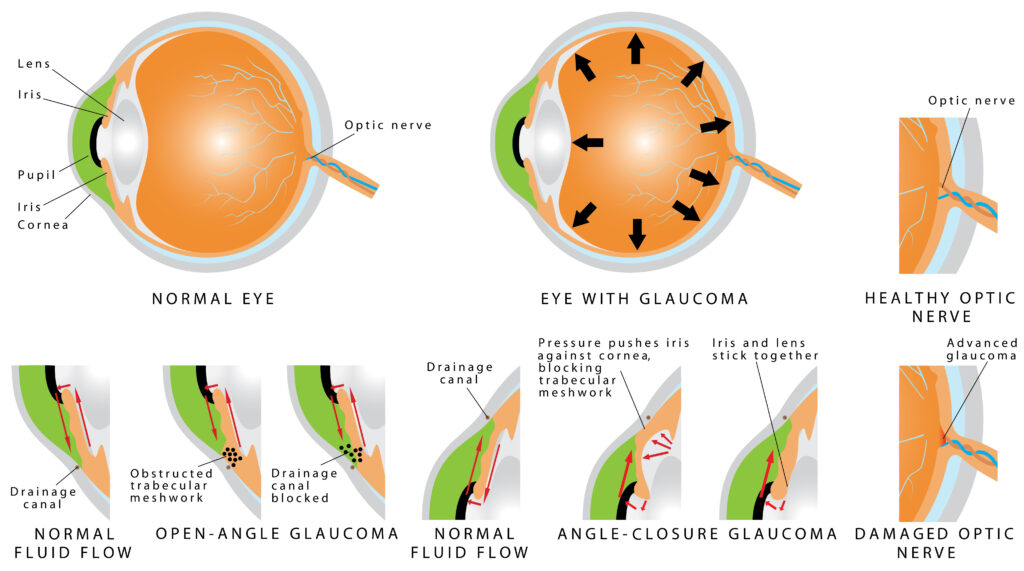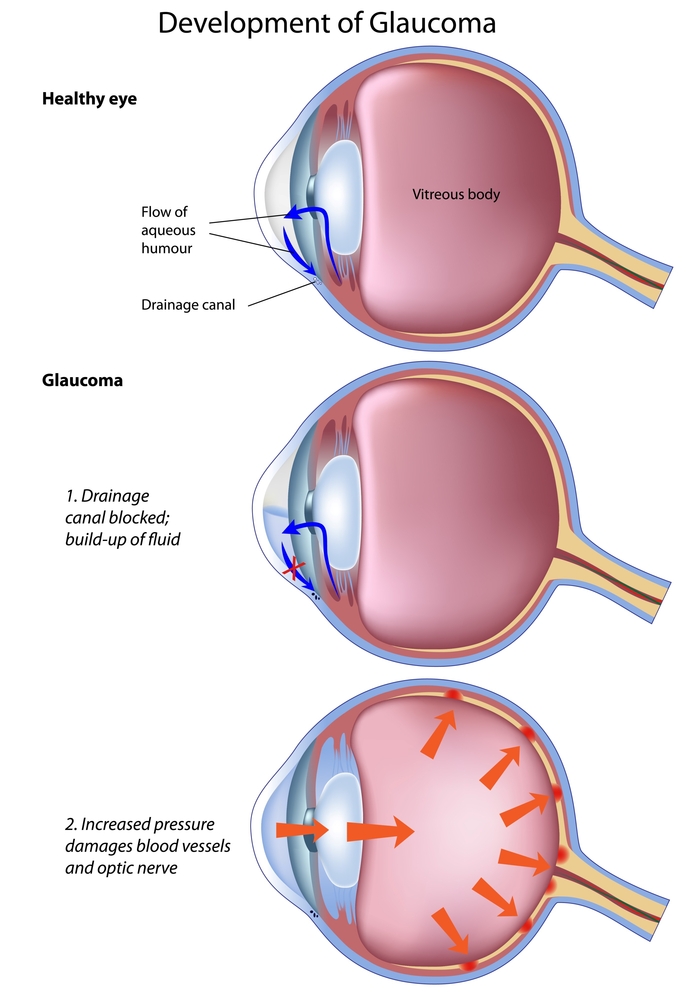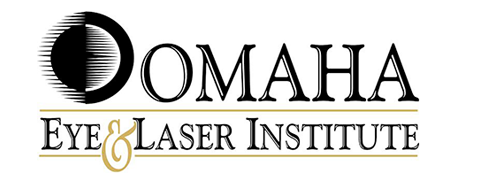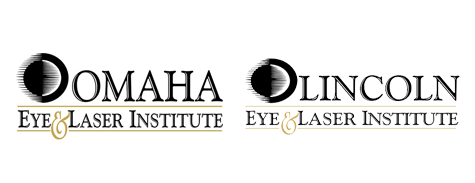Do you or someone you love have glaucoma? Although it can sound scary as one of the leading causes of blindness in adults over 60, it is manageable. As one of the most common age-related eye conditions you can develop, it’s vital to prioritize your eyes at any age.
What can make glaucoma so concerning is the fact that it causes irreversible vision loss. Any vision that’s lost due to glaucoma cannot be regained.
The good news is that if you diagnose it early, you can treat glaucoma. Treating glaucoma can slow it down and prevent further vision loss from occurring. Keep reading to learn more about treating glaucoma after getting diagnosed with it!
What is Glaucoma?

Glaucoma is a condition that damages the optic nerve due to increased eye pressure. The optic nerve is the part of your eye that connects it to your brain.
It’s an essential part of seeing as the optic nerve sends the images you see to your brain. If the optic nerve suffers any damage, you can develop blank spots in your vision and even tunnel vision. The more damage there is, the worse your vision becomes.
Glaucoma is almost always caused by increased pressure in the eye, usually due to a build-up of fluid. The most common form of glaucoma is called open-angle glaucoma.
Open-angle glaucoma
Open-angle glaucoma occurs when the primary drainage angle, which is the natural drainage channel between the cornea and iris, is open. While the drainage angle is open, the trabecular meshwork, the porous tissue surrounding the eye, is blocked. When this happens, it leads to a build-up of eye pressure that can eventually damage the optic nerve.
Angle-closure glaucoma
The counterpart to open-angle glaucoma is angle-closure glaucoma. Angle-closure glaucoma occurs when the primary drainage angle becomes closed off. This usually happens because the iris bulges out.
This form of glaucoma usually develops a lot more quickly and requires more immediate treatment. It can even happen very suddenly.
If it does, it’s called acute angle-closure glaucoma. Most forms of glaucoma don’t present any symptoms besides vision loss.
With acute angle-closure glaucoma, patients experience intense headaches, eye pain, nausea, and blurred vision. If you experience these symptoms, seek emergency medical treatment right away, as this is a medical emergency.
There are other forms of glaucoma but angle-closure and open-angle glaucoma are the two most common forms of glaucoma.
Glaucoma is treatable, but how it’s treated depends on the form of glaucoma you have, as well as the severity of your symptoms. These are all taken into account when considering treatment options.
To achieve the best results, diagnosing glaucoma early and treating it in the early stages will help avoid further vision loss.
How is Glaucoma Diagnosed?
The trouble with most forms of glaucoma is that there are no discernible symptoms. For most patients, this means that they don’t realize they have the condition until irreversible vision loss has already occurred.

Open-angle glaucoma doesn’t present any symptoms until the later stages when the optic nerve has become damaged enough to cause vision loss. This is why it’s so necessary to schedule regular eye exams with your eye doctor.
By the time you turn 60, you should see your eye doctor for an eye exam every year. The regularity of these exams may be increased if you have other health concerns like diabetes.
Measuring the pressure in your eye and examining your eyes is the only way for your eye doctor to know if you’re at risk of developing glaucoma or if you already have the condition and have yet to show any significant damage to your sight.
No matter what stage you have glaucoma diagnosed in, there are ways to treat it. The point of treating glaucoma is to prevent further damage to your vision. It’s most effective when you have your glaucoma diagnosed as early as possible.
What are the Treatment Options for Glaucoma?
There are a variety of treatments that your eye doctor may use to manage glaucoma and open-angle glaucoma, in particular. Only your eye doctor can recommend which treatments are best for you. They may suggest several options. You may also benefit from a combination of treatments. At Omaha Eye & Laser Institute, some of the treatments that your eye doctor may recommend include:
Eye Drops

Most eye doctors will usually begin treatment for glaucoma by prescribing eye drops to lower your eye pressure. For effectiveness, the eye drops must be taken continuously at the same time every day.
They can be particularly effective if you’re in the very early stages of glaucoma, as keeping your eye pressure low can prevent damage to the optic nerve.
Trabeculectomy
A trabeculectomy creates an opening in the eye and removes part of the trabecular meshwork. Removing part of the trabecular meshwork allows for better drainage and reduces eye pressure.
Trabeculoplasty
A trabeculoplasty is a procedure that opens up the trabecular meshwork. This procedure uses a laser instrument and can often be performed right in your eye doctor’s office.
MIGS
Minimally Invasive Glaucoma Surgery, or MIGS, is a series of procedures that can lower your eye pressure and require minimal surgery, risk, and recovery time. They can be effective for mild glaucoma, but more severe glaucoma may require a more invasive procedure.
SLT Laser Therapy
Another option for patients with mild glaucoma, SLT laser therapy may be used as an alternative to eye drops. If you have a more advanced case of glaucoma, your eye doctor may recommend a combination of eye drops and SLT to ensure that your pressure stays low enough. If successful, SLT will last 3-5 years, and you can have it repeated.
Glaucoma Tube Shunts
If you have a trabeculectomy that’s unsuccessful, your eye doctor may recommend undergoing a procedure to have a tube shunt inserted. The shunt is put into the eye and attached behind it to a small plate. It’s then covered by the clear tissue that covers the white of the eye. Putting a shunt in the eye is another way of lowering the pressure in the eye that’s similar to having a trabeculectomy.
Laser Cyclophotocoagulation

Most glaucoma treatments focus on how to lower pressure and improve how fluid can flow from the eye. Laser Cyclophotocoagulation, or CPC, concentrates instead on helping the eye produce less fluid.
The procedure uses a laser device on the ciliary body, which is the part of your eye that produces fluid. It can take some time to tell if CPC has affected pressure in the eye. Most eye doctors recommend patients continue taking any glaucoma medication as usual until there are definitive signs of improvement.
Glaucoma is a concerning condition if it’s left untreated. But if found early, you can manage it and keep your vision for years to come.
Are you concerned that you may have glaucoma? Schedule an appointment at Omaha Eye & Laser Institute in Omaha, NE, today to learn more!





